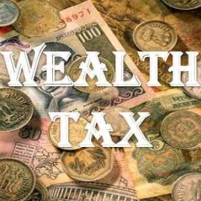Is it Time to Bring Back the Reagan Leveling of Wage and Investment Tax?
Tuesday, November 30, 2010
 (graphic: Anoop R Chandra & Co.)
(graphic: Anoop R Chandra & Co.)
Adopted with the blessing of conservatives like President Ronald Reagan and Democrats in Congress, the Tax Reform Act of 1986 equalized taxes on income from investments and income from wages. It ended the practice of lower taxes on income from wealth than income from work—something the country has moved away from since the George H. W. Bush years.
The two tax rates were equal for the years 1988-1990, but began to diverge again 1991. Tax breaks on capital gains were passed in 1997 under President Clinton and again in 2003, under President George W. Bush. The result was the current rate on long-term gains which stands at 15%, the lowest since the early 1930s. This only helps pad the bank accounts of Wall Street investors, and does little to spur new investment in companies or produce new jobs, argues Gerald Scorse at the Baltimore Chronicle & Sentinel.
“In reality, only a trace amount of the billions that change hands on Wall Street every day grows anything,” writes Scorse. “Aside from initial public offerings (IPOs) and secondary offerings, not a dime that’s invested in the market goes to companies. In fact, through dividends and stock buybacks, money flows in the opposite direction—out of companies, into the hands of investors. These investors aren’t growing jobs, they’re growing portfolios.”
If the George W. Bush tax cuts are allowed to expire at the of this year, the maximum income tax rate will return to 39.6%, while the capital gains rate will remain at 20%.
-Noel Brinkerhoff
Channeling Reagan on Tax Reform (by Gerald E. Scorse, Baltimore Chronicle & Sentinel)
Top Federal Income Tax Rates on Regular Income and Capital Gains since 1916 (Citizens for Tax Justice) (pdf)
- Top Stories
- Unusual News
- Where is the Money Going?
- Controversies
- U.S. and the World
- Appointments and Resignations
- Latest News
- Trump to Stop Deportations If…
- Trump Denounces World Series
- What If China Invaded the United States?
- Donald Trump Has a Mental Health Problem and It Has a Name
- Trump Goes on Renaming Frenzy






Comments